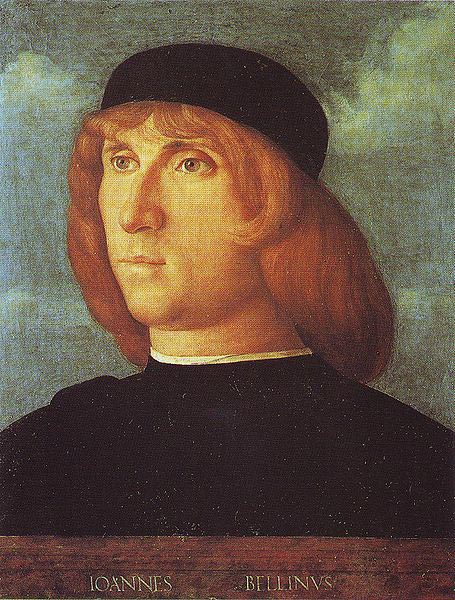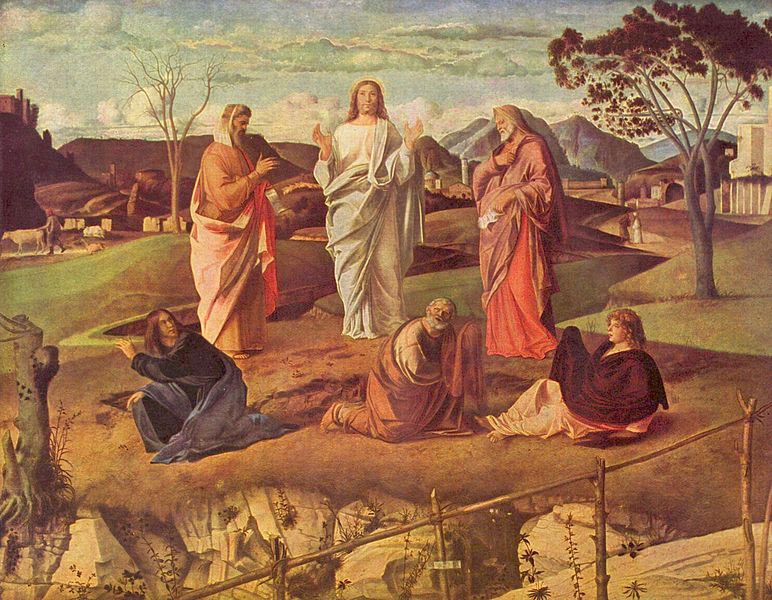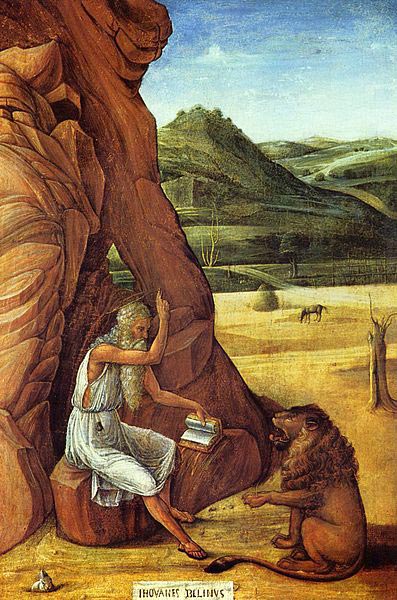| Giovanni Bellini | |
|---|---|
 |
|
| Born | 1430 Venice |
| Died | 1516 (at age 85–86) |
| Nationality | Italian |
| Movement | Renaissance |
| Field | Painting |
| Works | View Complete Works |
Italian painter Giovanni Bellini is considered to be a revolutionary figure in Venetian painting, moving painting styles towards a more colorful style. He added a new degree of realism in his paintings, along with new subject matter, with varied form and style, also introducing landscapes and natural light. Bellini was an essential part to the development of the Italian Renaissance movement in painting, for his integration of aesthetics or perception of art. He was also the founder of the Venetian School of Painting. He had pupils such as Titian and Giorgione, both of whom later became very famous artists.
The Bellini Artistic Dynasty
Born in Venice, Giovanni grew up in a family of painting artists. His father Jacopo Bellini, was one of the founders of the early Renaissance movement in Venice and northern Italy. Giovanni’s brother, Gentile, became the official portrait artist for the doges, or senior elected officials of Venice and Genoa. His sister, Niccolsa, married Andrea Mantegna, an artist who became well known for his experimentation of perspective and quattrocento style. Giovanni lived and worked with his father and brother, developing and experimenting with his own techniques and styles of painting.
Evolution of Painting Style
 Giovanni’s early paintings were of religious feeling, human experiences which evoked pity or compassion, and extended an expression of himself. He used a severe and rigid style, executed with tempera paints. Tempera paints were fast to dry, allowing for great precision, but layering effects could not be used, so his early works rarely had the deep saturation of color that the oil paints would later achieve. His earlier works also reflected similar composition and style to that of his brother-in-law, Andrea Mantegna.
Giovanni’s early paintings were of religious feeling, human experiences which evoked pity or compassion, and extended an expression of himself. He used a severe and rigid style, executed with tempera paints. Tempera paints were fast to dry, allowing for great precision, but layering effects could not be used, so his early works rarely had the deep saturation of color that the oil paints would later achieve. His earlier works also reflected similar composition and style to that of his brother-in-law, Andrea Mantegna.
When Antonello da Messina introduced the new oil paint medium in 1473, Giovanni gradually acquired mastery of the oil paints, perfecting the fusion of colors, and atmospheric gradation of tones. With this transition of medium at approximately age 30, his subjects began to change from pathos to a newer noble serenity, with tranquil landscaping using full color and displaying natural light, which he used in his earlier paintings. The new style contrasts of subtle to brilliant colors, and dark to enlightened subjects became his new style.
Commissioned Works
 In 1470, Giovanni received his first commission to work, along with his brother Gentile, in the Scuola di San Marco, or universal church school. Deluge with Noah’s Ark was one of his first commissioned works. In 1479, Bellini became the conservator of artwork in the Great Hall of the Doge’s Palace. He was in charge of repairing and renewing works of his predecessors and was also commissioned to paint six or seven new subjects. Tragically, many of the great artist’s public works were destroyed due to a fire in 1577.
In 1470, Giovanni received his first commission to work, along with his brother Gentile, in the Scuola di San Marco, or universal church school. Deluge with Noah’s Ark was one of his first commissioned works. In 1479, Bellini became the conservator of artwork in the Great Hall of the Doge’s Palace. He was in charge of repairing and renewing works of his predecessors and was also commissioned to paint six or seven new subjects. Tragically, many of the great artist’s public works were destroyed due to a fire in 1577.
Bellini used disguised symbolism in his 1480 painting St. Francis in Ecstasy and San Giobbe Altarpiece, painted in 1478. His religious symbolism was displayed through natural elements, such as rocks and grapevines. In 1507, his brother and lifetime partner in art, Gentile Bellini, died. Giovanni completed the painting Preaching of St. Mark that Gentile began for Scuola di San Marco. In 1513, Giovanni’s position as conservator or sole master was taken from him by one of his prized pupils, Titian. This however did not hinder his desire to paint.
In 1514, he painted The Feast of the Gods for Duke Alfonso I of Ferrara. Bellini died at age 86, before completing this painting, and his student Titian completed the work for him out of respect. Giovanni was buried in the Basilica di San Giovanni e Paolo, the traditional burial site of the doges, also out of respect and admiration for the amazing work that he had produced throughout his long lifetime.
Artistic Influences
Bellini was able to absorb a wide range of artistic influences from the traditional Venetian artists as well as other northern Italian painters. His early paintings, influenced by Mantegna, incorporated the work of Piero della Francesca as well, in which the laws of perspective were used. This is evident in his painting Coronation of the Virgin, where the buildings, figures, throne, and landscape are unified by linear perspective.
Giovanni’s concentration was mostly on religious subjects, but also introducing landscapes, and use of natural light, changing the colors and mood of his paintings. He also painted portraits such as the Portrait of Doge Leonardo Loredan in 1501. He also created great historical fresco paintings and many church altarpieces. Through experimentation, Giovanni Bellini became one of the greatest landscape painters of the time. His ability to portray natural, outdoor light so skillfully and realistically made it possible to decipher the season and even the time of day, due to his preciseness. The Agony in the Garden was the first of a series of Venetian landscape scenes created by Bellini, which he continued to develop throughout the next century.
Contribution to the Arts
Giovanni Bellini was considered the greatest venetian painter of the fifteenth century and was one of the great pioneers of style in Venetian art. He offered a more detailed style, with a greater range of colors than had been offered by previous painters. Bellini’s creation of his own Venetian school, offered training for other aspiring painters, creating two of the greater painters in history. Bellini was held in esteem by many of the other period artists, and was offered so many commissions that he was unable to fulfill them all during his lifetime.
Giovanni Bellini was extremely influential among many of the younger generations of painters, who were interested in experimenting with a new style in Renaissance art. They were able to study the grace and gentleness in his devotional characters and his skillful handling of colors and light. Bellini’s most important contribution may have been his experimentation with the use of color, creating landscape and atmosphere using the newer medium of oil paints. He shared his techniques with future artists. He was able to use and build upon the knowledge of artists before him, and during his lifetime, created his own style of painting. Bellini’s works were numerous, and those works which survived are admired in museums throughout the world.